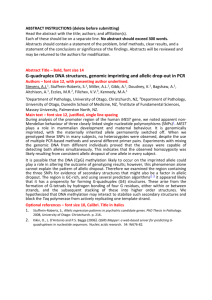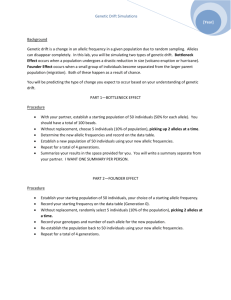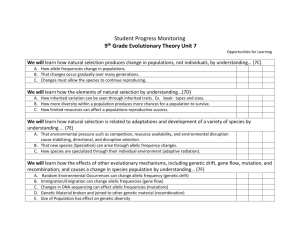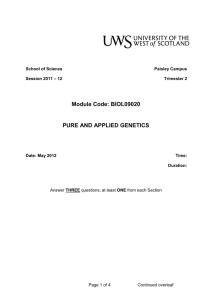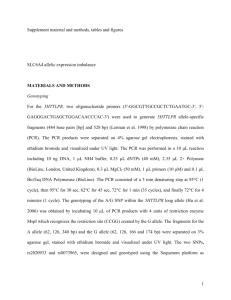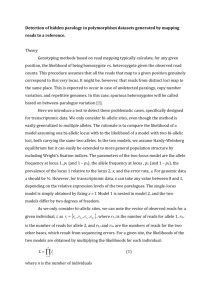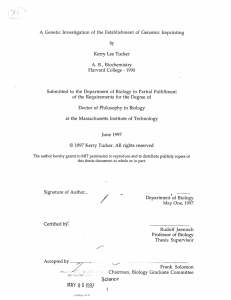While investigating psychiatric candidate genes, three genetic
advertisement
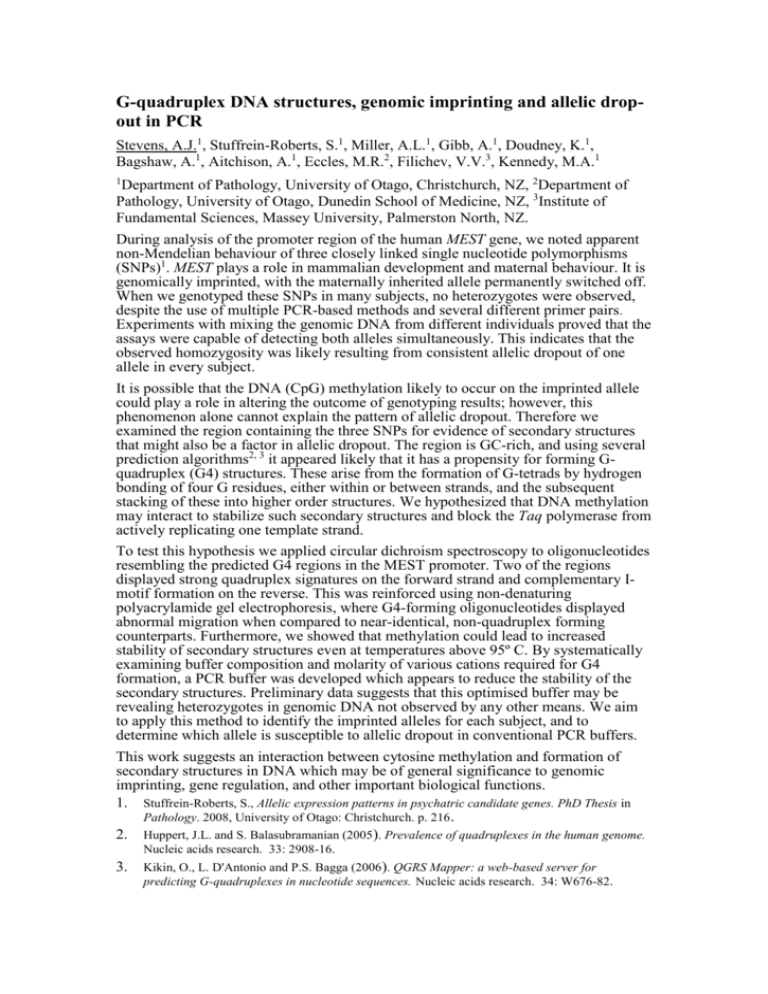
G-quadruplex DNA structures, genomic imprinting and allelic dropout in PCR Stevens, A.J.1, Stuffrein-Roberts, S.1, Miller, A.L.1, Gibb, A.1, Doudney, K.1, Bagshaw, A.1, Aitchison, A.1, Eccles, M.R.2, Filichev, V.V.3, Kennedy, M.A.1 1 Department of Pathology, University of Otago, Christchurch, NZ, 2Department of Pathology, University of Otago, Dunedin School of Medicine, NZ, 3Institute of Fundamental Sciences, Massey University, Palmerston North, NZ. During analysis of the promoter region of the human MEST gene, we noted apparent non-Mendelian behaviour of three closely linked single nucleotide polymorphisms (SNPs)1. MEST plays a role in mammalian development and maternal behaviour. It is genomically imprinted, with the maternally inherited allele permanently switched off. When we genotyped these SNPs in many subjects, no heterozygotes were observed, despite the use of multiple PCR-based methods and several different primer pairs. Experiments with mixing the genomic DNA from different individuals proved that the assays were capable of detecting both alleles simultaneously. This indicates that the observed homozygosity was likely resulting from consistent allelic dropout of one allele in every subject. It is possible that the DNA (CpG) methylation likely to occur on the imprinted allele could play a role in altering the outcome of genotyping results; however, this phenomenon alone cannot explain the pattern of allelic dropout. Therefore we examined the region containing the three SNPs for evidence of secondary structures that might also be a factor in allelic dropout. The region is GC-rich, and using several prediction algorithms2, 3 it appeared likely that it has a propensity for forming Gquadruplex (G4) structures. These arise from the formation of G-tetrads by hydrogen bonding of four G residues, either within or between strands, and the subsequent stacking of these into higher order structures. We hypothesized that DNA methylation may interact to stabilize such secondary structures and block the Taq polymerase from actively replicating one template strand. To test this hypothesis we applied circular dichroism spectroscopy to oligonucleotides resembling the predicted G4 regions in the MEST promoter. Two of the regions displayed strong quadruplex signatures on the forward strand and complementary Imotif formation on the reverse. This was reinforced using non-denaturing polyacrylamide gel electrophoresis, where G4-forming oligonucleotides displayed abnormal migration when compared to near-identical, non-quadruplex forming counterparts. Furthermore, we showed that methylation could lead to increased stability of secondary structures even at temperatures above 95º C. By systematically examining buffer composition and molarity of various cations required for G4 formation, a PCR buffer was developed which appears to reduce the stability of the secondary structures. Preliminary data suggests that this optimised buffer may be revealing heterozygotes in genomic DNA not observed by any other means. We aim to apply this method to identify the imprinted alleles for each subject, and to determine which allele is susceptible to allelic dropout in conventional PCR buffers. This work suggests an interaction between cytosine methylation and formation of secondary structures in DNA which may be of general significance to genomic imprinting, gene regulation, and other important biological functions. 1. Stuffrein-Roberts, S., Allelic expression patterns in psychatric candidate genes. PhD Thesis in Pathology. 2008, University of Otago: Christchurch. p. 216 . 2. Huppert, J.L. and S. Balasubramanian (2005). Prevalence of quadruplexes in the human genome. Nucleic acids research. 33: 2908-16. 3. Kikin, O., L. D'Antonio and P.S. Bagga (2006 ). QGRS Mapper: a web-based server for predicting G-quadruplexes in nucleotide sequences. Nucleic acids research. 34: W676-82.
